Pentax SMC DA 18-270mm f/3.5-6.3 SDM Lens Review
Pentax SMC DA 18-270mm f/3.5-6.3 SDM Performance
Sharpness starts off extremely high, reaching excellent levels at f/3.5 and 18mm. The clarity towards the edge of the frame lags behind somewhat at maximum aperture for this focal length, only reaching fairly good levels. Stopping down improves sharpness across the frame and peak sharpness is achieved at f/8 for this focal length. Here sharpness is outstanding across the frame.As is typical for high zoom ratio lenses, performance drops off as the lens is zoomed towards its telephoto setting. At 70mm sharpness reaches good levels in the centre of the frame at maximum aperture, but falls short of fair levels of clarity towards the edges. Peak quality across the frame is achieved at f/11 for this focal length. Here sharpness is excellent across the frame.
Finally, at 270mm, sharpness can only be considered as fair in the centre of the frame, and fairly poor towards the edges of the frame. Stopping down to f/11 results in a great improvement in performance with sharpness in the centre reaching very good levels, and fairly good levels towards the edges of the frame.
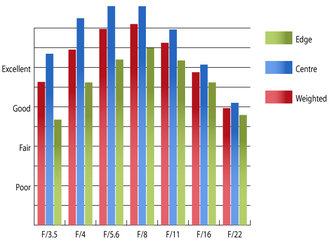 Resolution @ 18mm | 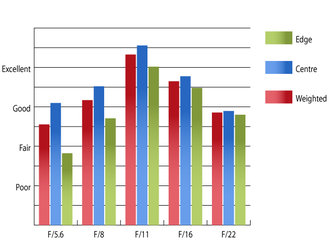 Resolution @ 70mm | |
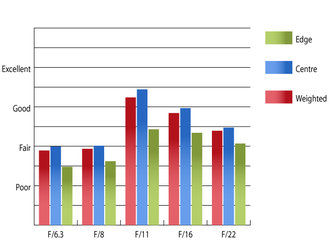 Resolution @ 270mm | How to read our chartsThe blue column represents readings from the centre of the picture frame at the various apertures and the green is from the edges. Averaging them out gives the red weighted column.The scale on the left side is an indication of actual image resolution. The taller the column, the better the lens performance. Simple. For this review, the lens was tested on a Pentax K-5 IIs using Imatest. |
Chromatic aberrations are well controlled at shorter focal length settings, but zoom the lens to 270mm and fringing becomes very strong indeed towards the edges of the frame, exceeding two pixel widths. This level of fringing may pose issues with high contrast edges placed near the extremities of the frame.
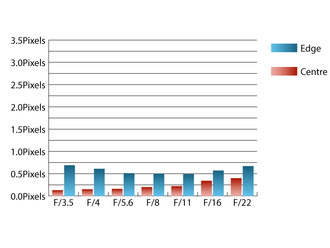 Chromatic aberration @ 18mm | 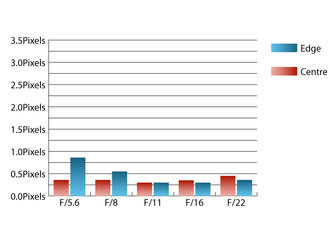 Chromatic aberration @ 70mm | |
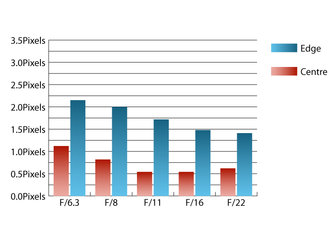 Chromatic aberration @ 270mm | How to read our chartsChromatic aberration is the lens' inability to focus on the sensor or film all colours of visible light at the same point. Severe chromatic aberration gives a noticeable fringing or a halo effect around sharp edges within the picture. It can be cured in software.Apochromatic lenses have special lens elements aspheric, extra-low dispersion etc. to minimize the problem, hence they usually cost more. For this review, the lens was tested on a Pentax K-5 IIs using Imatest. |
Falloff of illumination is reasonably well controlled for a lens with an 15x zoom range. At 18mm and f/3.5 the corners of the frame are 1.53 stops darker than the image centre and visually uniform illumination is achieved with the lens stopped down to f/5.6 or beyond. At 270mm the corners are only 1.26 stops darker than the image centre and visually uniform illumination is achieved at f/11.
Distortion is often a weak point with high zoom ratio lenses, and although there is 4.9% of barrel distortion at 18mm and 1.61% pincushion distortion at 270mm, these values are quite low for this kind of lens. The distortion pattern remains uniform across the frame at either end of the zoom range, which should mean applying corrections in image editing software after will be fairly straightforward.
During testing, this lens proved itself quite resistant to flare and contrast levels remain good, even when shooting into the light at most focal lengths. A petal shaped lens hood is supplied with the lens, which does a decent job of shielding the lens from extraneous light that may cause issues.
Add your message
Login required
Please login here or if you've not registered, you can register here. Registering is safe, quick and free.
Please login here or if you've not registered, you can register here. Registering is safe, quick and free.
photodo Stats
1102 lenses
428 MTF tests
74 in-depth photodo reviews
100+ users join each day
Help the lens community by reviewing or rating a lens today via our lens search
428 MTF tests
74 in-depth photodo reviews
100+ users join each day
Help the lens community by reviewing or rating a lens today via our lens search
Latest Lens Reviews
- Chinon 28mm f/2.8 Vintage Lens Review
- Canon EF 70-200mm f/4L IS II USM Lens Review
- Samyang AF 85mm f/1.4 EF Review
- Sigma 70mm f/2.8 DG Macro Art Review
- Samyang AF 24mm f/2.8 FE Review
- Meike 50mm f/1.7 Review
- Tamron 70-210mm f/4 Di VC USD Review
- Lensbaby Burnside 35mm f/2.8 Review
- Asahi Super Takumar 50mm f/1.4 Review
- Asahi Super-Multi-Coated Takumar 135mm f/3.5 Review
